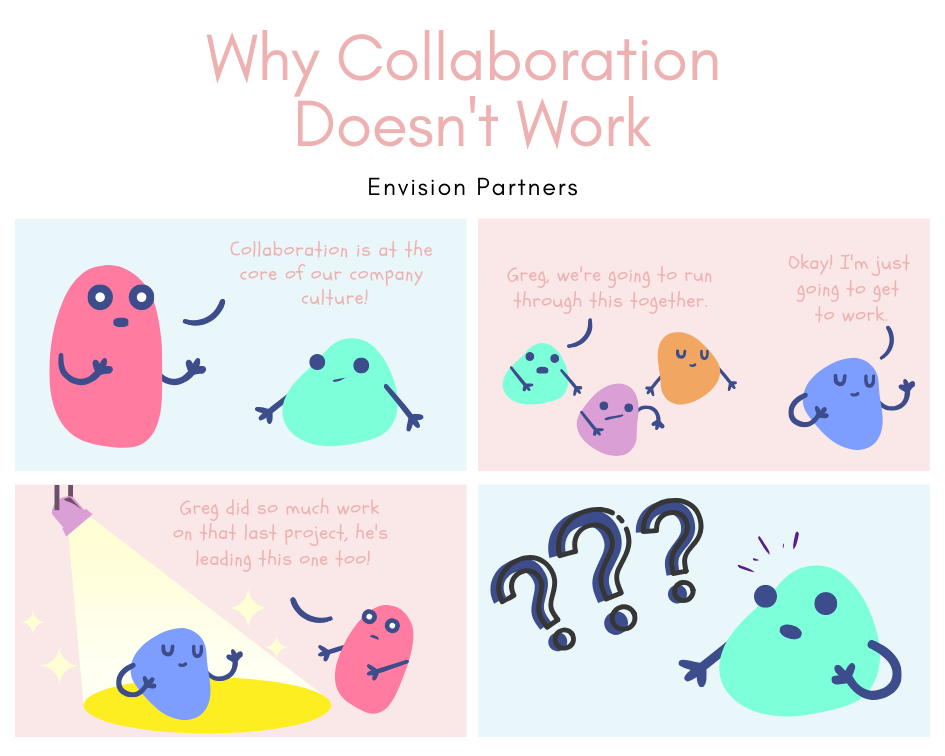A Tale of Two Chefs
There was only one orange left in the kitchen and two prominent chefs were fighting over it as they prepared dinner for the dignitaries waiting upstairs.
“I need that orange!”
“Yes, but I need that orange as well!”
Time was running out and they both needed an orange to finish their recipes for the President’s dinner. They decided on a compromise and grabbed a large kitchen knife to split the orange in half, and each went to their corner to finish the meal.
One chef squeezed juice from their half of the orange into the special sauce he was making. It wasn’t quite enough, but it would have to do. The other chef grated the peel of their half into the dough of their famous cake. He too didn’t have as much as ideal, but given the situation, what else could they have done?
The better solution may seem obvious to us now: both chefs would have been better off if they had peeled the orange and had simply taken the part they needed. Instead, the chefs had focused on each other’s position (what they needed) and not on each other’s interest (why they needed it). The ability to communicate our interests (the why) is at the heart of positive negotiation and of creative problem-solving–which is also a kind of negotiation.
Positions are pre-determined solutions or demands that people use to describe what they want –that is, what the person wants to happen on a particular issue. Position-based negotiation starts with a limited number of options that are either accepted or declined. For example:
“I want the report by Friday.”
When we lead with our positions, this is where the conversation begins—and usually ends because we immediately begin debating the merits of a limited number of solutions. Such as:
“I can’t deliver the report by Friday”.
Behind every position is an interest that the position fulfills. Interests help define the real problem. Interests may be intangible, unexpressed, and even not consistent, providing much room for additional exploration. Agreements are more easily found when we take time to explore each person’s needs, desires, concerns, or fears. Therefore, it is more helpful to lead with our interest than with our position, and likewise, it will be more helpful to learn the other person’s interest behind their position. For example:
“I need to receive the report by Friday, so I can have time to review and edit before the due date next Wednesday.”
With that information, the response can be toward the needs, rather than the position, like this:
I can give you the sections that are complete today, and when I get the data analysis completed, I will give you the remainder on Monday.”
Knowing and communicating our own interests is just as important as figuring out the other person’s interests. Ask yourself the why of your position and share it. You knew the problem (interest) before you knew the solution (position), so from your side of the conversation, start your conversation by giving clarity on the problem first.
To identify interests of the other person, you need to ask questions to determine what the person believes he or she truly needs. When you ask, be sure to clarify that you are not asking questions for justification of their position, but for a better understanding of their interests.
Using open-ended questions that encourage a person to “tell their story” helps you begin to understand their interest. Open ended questions are opposite of closed-ended questions, which require a response of “yes” or “no.” To illustrate the difference, consider the following example:
- Did you have a good relationship with your supervisor? (closed-ended)
- Tell me about your relationship with your supervisor. (open-ended)
Examples of open-ended questions:
- What’s your basic concern about …?
- Tell me about …
- What do you think about …?
- How could we fix …?
- What would happen if …?
- How else could you do …?
- What could you tell me about …?
- Then what?
- Can you help me understand …?
- What do you think you will lose if you …?
- What have you tried before?
- What do you want to do next?
- How can I be of help?
The most powerful interests for you to consider- and of which many people are not thinking- are the basic human needs for security, economic well-being, sense of belonging to an organization, identify, recognition of contribution or efforts, and autonomy or control over decisions or work. It is not uncommon for you or the other person to have multiple interests and it would be helpful for you to write them down as they occur to help you sort them out. This list may be helpful to think through creative ideas that may meet multiple interests of all parties involved.
Problem solving on your interests and the other person’s interests leads to more creative and successful resolutions because you meet not only your need but theirs as well.
In your next meeting bring an orange and tell the story of these two chefs. Talk about positions and interests in your own words. Make the orange a symbol of the kind of creative and innovative dialogue you want on your team.











